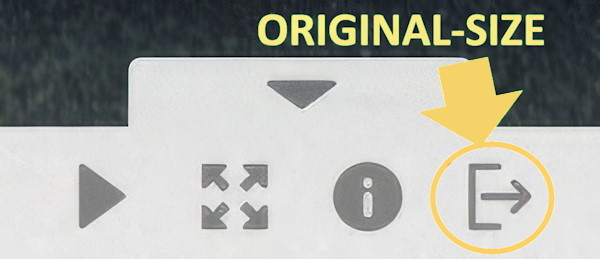FYI: this page is in construction, please re-visit on November 18th, 2024. Thanks!
Tamron 28-75mm f2.8 G2 vs. Zeiss 28-85mm zoom lens shootout at São Bento station

Summary: In this article we compare the popular Tamron 28-75mm f2.8 full-frame standard zoom lens, which is renowned for its excellent image quality, with the 35+ year old Zeiss 28-85mm vintage lens, which Zeiss claims has the image quality of a prime lens.
The epic location of the lens shootout is the beautiful UNESCO World Heritage site of São Bento train station in Porto, Portugal.
Tamron 28-75mm f2.8 G2 and Zeiss 28-85mm highlights
Available for Sony E-mount and Nikon Z-mount full-frame cameras, the Tamron 28-75mm f2.8 G2 lens (highly recommended by Christopher Frost in his YouTube channel) is often sold as a high-quality replacement for kit lenses and is a good “always-on” travel lens. Known for its versatility, including semi-macro minimum focusing distance and beautiful bokeh. The Tamron lens challenges the expensive Sony 24-70mm f2.8 GM in many aspects of image quality, and is much lighter and smaller.

The over 35 year old Contax/Yashica mount Carl Zeiss Vario-Sonnar T* 28-85mm f3.3-4 vintage lens (see my previous article about the Zeiss lens) has been adapted to the E-mount and is renowned for its beautiful bokeh and cinematic colour rendition for video shooters.

Pixel Peeping Exercise
Let’s compare the image quality of the Tamron and Zeiss lenses at 24mm, 35mm, 50mm and 75mm by doing some pixel peeping.
TBD peeping overview image.
When you click on an image in the galleries, following buttons will allow you to select some features. Use Original-size to watch the photo in full resolution:

Slideshow | Fullscreen | Image-Info | Original-size
TBD image center equalness and Strong CA images. Why gallery for bokeh shot?
Tamron vs. Carl Zeiss lenses Bokeh comparison
The bokeh of the second-generation Tamron G2 lens is much improved compared to the strong bubble and onion ring bokeh of the first-generation lens. However, there are still some minor reminders of these bokeh weaknesses with the second-generation G2 lens, if you look closely at the Tamron bokeh shot above.
In my opinion, the Tamron’s bokeh is at least on a par with the Zeiss, and its bokeh benefits from its larger aperture of f2.8 compared to the f3.3-4 of the Zeiss, having 9 aperture blades instead of 6 and rounder bokeh balls at the corner of the image.
Tamron and Zeiss shots in and around São Bento station
To get some real impressions beyond pixel peeping of what you can shoot with these lenses, take a look at some “normal” location shots in and around São Bento station. Click on an image of interest and press the Image-Info button “i” to see the aperture, shutter speed and ISO settings for each photo.
When you click on an image in the galleries, following buttons will allow you to select some features. Use Original-size to watch the photo in full resolution:

Slideshow | Fullscreen | Image-Info | Original-size
Why have I included some photos taken with The Pixel 8 Pro? Because it complements the Tamron and Zeiss lenses with high-quality approx. 50-megapixel shots at 12mm and 24mm (full frame equivalent). Beyond 75mm with the Tamron and 85mm with the Zeiss, the Pixel 8 Pro steps in with a few more shots at 112mm (full frame equivalent), unfortunately with almost no object separation due to its small sensor.
In my opinion, it is more beneficial to combine the strengths of mirrorless and smartphone cameras than to favour one or the other or to argue for only one category of camera. So combining the 12mm and 24mm focal lengths (full frame equivalent) of a good photo-centric smartphone like the Pixel 8 with a versatile 28-75mm lens like the Tamron gives you a powerful but small and inexpensive combination for travel photography.
Rundown
Here are the highlights of my findings when comparing these two lenses:
- The Tamron 28-75mm f2.8 outperforms the 35+ year old Carl Zeiss 28-85mm f/3.3-4 vintage lens in all areas. No big surprise, as the inexpensive Tamron lens is famous for its very good image quality, even compared to the expensive Sony 24-70mm GM lens, and offers excellent value for money.
- The Carl Zeiss lens suffers badly from longitudinal and lateral chromatic aberrations, which can be partially corrected in some photo editing software.
- From 35mm to 75mm, the Carl Zeiss lens performs surprisingly well in the centre of the frame, but still falls short of the Tamron in terms of contrast.
- Hint: better use this lens in AF-C / continuous autofocus mode instead of AF-S mode, to considerable increase focus performance especially in challenging lighting situations. This is because of a stronger impact of phase detection than contrast detection in AF-C mode.
Videos of Sao Bento Station
Leonard Shea’s 4K video gives a nice overview of the São Bento station:
Better get your surfboard ready before you watch this video, as heavy rains flood the area around São Bento station and its metro station in January 2023:
More information about the Carl Zeiss 28-85mm lens
Best Zeiss Zoom Lens? Review of the Carl Zeiss Vario-Sonnar T* 28-85mm f/3.3-4 classic lens
Don’t hesitate to leave a comment below
Your comments are highly valued. Please note that comments undergo manual verification to prevent spam, which may cause a delay in their appearance.